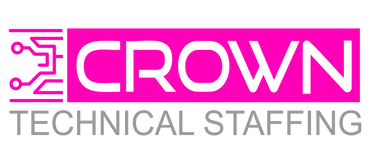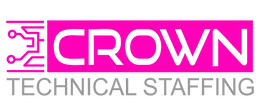Would you agree with the following statement: success leaves clues?
How do we better engage and train our middle managers, who so often are, the lifeline and one of the most important cogs in the manufacturing wheel?
In our latest edition of “Engineering 365” we will pick up the clues left behind by one of the most exceptional places to work, Stryker, a global medical device manufacturer. I’m a huge fan of looking at what others are doing well and modifying those strategies to fit each unique organization. Stryker stands out with its employee engagement and leadership training strategies, where 90% of its employees say this is a great place to work, and 92% state that they feel their work makes a difference.
What sets Stryker apart from its competitors?
Look no further than their Manager and Leadership Empowerment strategies. By uplifting and empowering their best managers, Stryker ensures that engagement is not just a top-down directive but a lived experience.
A Strength and Engagement Program for managers is designed to enhance the effectiveness, productivity, and overall engagement of managers within an organization. This type of program focuses on identifying and leveraging the unique strengths of each manager, promoting better engagement not only among the managers themselves but also with their teams.
Here is a structured approach you might consider for an organization that is facing challenges in managerial development and leadership:
Step 1: The Blueprint to Managerial Excellence
- Initiate CliftonStrengths Assessments: Start by administering the CliftonStrengths assessment to all managers. This tool will help uncover each manager’s top strengths, providing a foundation for personalized development plans.
- Analyze Assessment Results: Work with your HR or L&D team to analyze the results. Identify common themes and areas for improvement that align with organizational goals.
- Personalize Feedback Sessions: Schedule individual feedback sessions with each manager to discuss their strengths and areas for improvement, setting the stage for targeted development.
Step 2: Develop Training Workshops
- Design Custom Workshops: Based on the strengths assessment, design a series of workshops focused on leadership, communication, conflict resolution, and strategic planning. These are designed to leverage the managers’ identified strengths.
- Incorporate Experiential Learning: Use case studies, simulations, and role-playing exercises relevant to the manufacturing environment to enhance learning and applicability.
- Evaluate Workshop Impact: Implement pre- and post-workshop assessments to measure the effectiveness of the training and adjust the curriculum as needed.
Offer actionable suggestions for how leaders can apply their strengths within their roles:
Strategic Leaders: Conduct regular strategy sessions focused on process improvement and innovation. Utilize their foresight to anticipate and mitigate risks before they impact production.
Achievers: Set clear, ambitious yet achievable goals for their teams. Use their drive to inspire and motivate their teams, celebrating milestones to maintain momentum.
Relators: Implement regular team-building activities that enhance trust and communication. Foster a mentorship culture where more experienced workers guide newcomers, enhancing team unity and efficiency.
Responsible Leaders: Develop and oversee a comprehensive checklist for safety and quality compliance, ensuring all team members are trained and accountable. Their reliability will reinforce a culture of excellence and safety.
Maximizers: Identify areas within the production process that can be optimized without compromising quality. Encourage innovation by rewarding team members who propose and implement efficiency improvements.
Step 3: Coaching Strategies
- Assign Coaches: Pair each manager with a coach who has complementary strengths and leadership experience. Coaches can be internal senior leaders or external experts.
- Focus on Personalized Goals: Coaches should help managers set and pursue personal and professional goals that leverage their strengths and address areas for growth.
- Monitor Progress: Regular coaching sessions should be scheduled to review progress, tackle challenges, and adjust goals as necessary.
Step 4: Establish Peer Support Groups
- Create Support Networks: Form groups of managers who can meet regularly to share experiences, challenges, and strategies. Encourage cross-departmental groups to broaden perspectives.
- Facilitate Knowledge Sharing: Use these groups as a platform for sharing best practices, lessons learned, and success stories, fostering a culture of continuous learning.
Step 5: Feedback Mechanisms
- Implement 360-Degree Feedback: Establish a system for managers to receive constructive feedback from their teams, peers, and higher-level leadership.
- Use Feedback for Development: Encourage managers to use the feedback to adjust their leadership approaches and development plans.
- Continuous Improvement Loop: Regularly review the feedback process for effectiveness and make adjustments to ensure it remains a valuable tool for growth and engagement.
As mentioned, the success of Stryker in the development and engagement of their middle management leadership team is not unique to only one company.
Through the structured approach of leveraging CliftonStrengths Assessments, designing impactful training workshops, employing personalized coaching strategies, fostering peer support networks, and providing 360-degree feedback mechanisms, we not only elevate the role of middle managers but also fortify the very backbone of our organizations.
It’s evident that success indeed leaves clues—clues that when observed and adapted, can transform even our “B-level” managerial candidates into members of the organization who are super productive within their strengths.
Here are three ways that we can help…
CTS carries out deep talent mapping, nationwide, to ensure our shortlists contain only the very best leaders for your Engineering and Manufacturing teams.
1. We help to attract and retain the best candidates, specifically for your team, in addition to the frontline leaders that you’ll need for growth and stability.
2. Reduce the cost of acquiring and training new hires by supporting and enhancing the efforts of your onboarding team for the first 90 days.
3. Provide a zero-risk and no-cost assessment of your hiring strategies with a 15-minute consultation.
Ready to elevate your talent and hiring strategy? Explore our latest tool tailored for VPs and Directors in the manufacturing sector. In just 2 minutes, gain insights to boost engagement and help strengthen your leadership team. In addition, receive a customized report for your team. See the link below.


